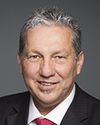Okay, but in the case we are discussing, the enumeration of language minorities, we are talking about a very small population outside Quebec and a very small population inside Quebec. These are not the types of questions that apply to all Canadians, such as whether they are in a relationship, whether they are married or whether they have children, and how many.
You are saying that the short questionnaire will reach 75% of the targeted people and that the long questionnaire will only reach 25% of them. If I understand correctly, if those questions are included in the short questionnaire, they will automatically appear in the long questionnaire. However, 100% of the questionnaires affect Canada as a whole. We are not trying to gather Canada-wide information, but rather to enumerate minorities. They must be sought out and reached.
How can you convince me that, scientifically speaking, a 25% sample size can be better than a sample involving 100% of the people we want to survey?




